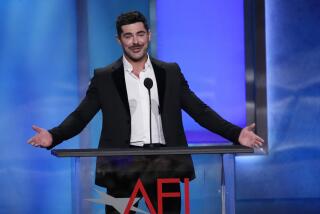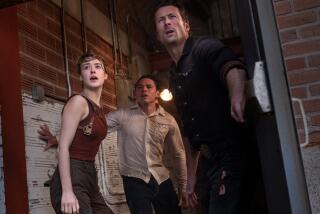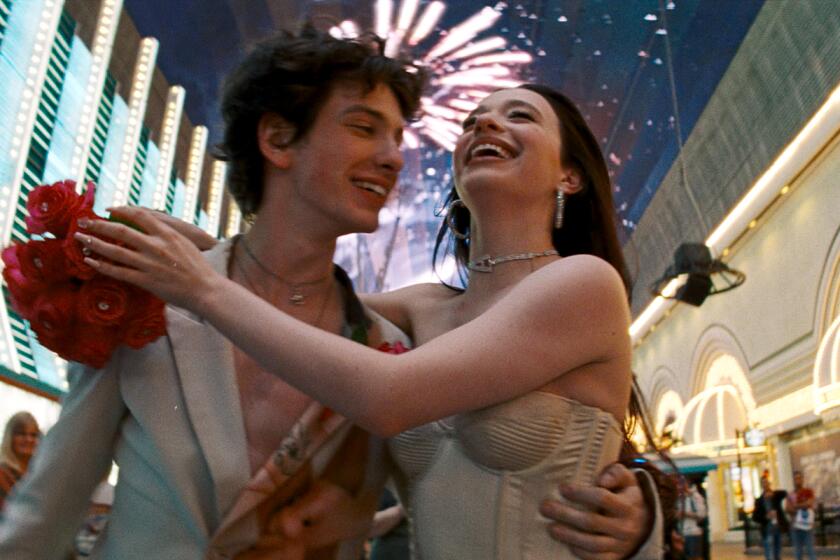The water bill? Don’t ask
- Share via
DIRECTOR Andrew Davis jokes that filming the elaborate train derailment scene in the 1993 hit “The Fugitive” was a walk in the park compared with shooting the ocean rescue sequences in his latest film, “The Guardian.”
“We just bought a train and pushed it from behind and knocked it off the tracks,” he says.
But for “The Guardian,” which stars Kevin Costner and Ashton Kutcher as two Coast Guard rescue swimmers, the production had to design a special tank that would mimic the choppy, treacherous waters of the Bering Sea as well as the volatile aftereffects of hurricanes and volcanoes on the oceans.
The tank also had to hold various sets, including a maze of caves in the Bering Sea and fishing boats in peril, while being warm enough for the actors, grips, safety crew and camera operators to swim in.
“The great fear when you take on a project like this -- I like to keep my films sort of realistic -- is ‘What happens if it doesn’t work?’ ” says Davis. “What if you don’t make the water look believable?”
So he and his staff spent a lot of time exploring what real water looks like in storms. “We also looked at Coast Guard rescue footage. We used those as templates for what our goals were.”
Davis turned to two of his veteran collaborators, production designer Maher Ahmad and visual effects supervisor William Mesa, to work their magic in the water rescue scenes.
“It was quite an undertaking for a number of reasons,” says Ahmad, who came up with the general drawings and the descriptions of what the tank needed. What he wanted was a device that would make several types of waves. “Most of the [previously existing] wave tanks are mechanical,” he explains. “They have a device or a paddle or a ball that agitates the water to create the waves.”
But mechanical motors couldn’t provide the variety of waves needed.
The waves, which swelled up to about nine feet in the tank, were created by air pressure. “It was a pneumatic air tank,” Ahmad says. “Someone had the idea of going up to Six Flags in Valencia. They have a wave tank that kids bob up and down in.” There was even some discussion of shooting the movie in that tank at Hurricane Harbor, but the waves there weren’t raucous enough.
Going on the Internet, they found a company in New York that designs the waves for water tank attractions at theme parks. The producers decided to build their own. But because the company had never built a machine for a square tank -- the theme parks’ tanks have a rounded end where the waves dissipate -- “we didn’t know exactly what was going to happen,” Ahmad says.
“There was a lot of risk involved because we were basically doing something that had never been done. We were working on past experiences and intuition. We were liable to build this thing and it wouldn’t work right.”
CONSTRUCTION on the tank -- measuring 80 by 100 feet and 12 feet deep, with a 50-foot-high blue screen behind it -- began in New Orleans late in the summer of 2005. “We were about 80% done with it at enormous expense,” says Ahmad. (Neither he nor anyone else involved would divulge the cost.) Then Hurricane Katrina hit, and the production had to shut down and relocate to Shreveport, La., where the tank had to be rebuilt.
The tank holds 750,000 gallons of water. The water had to be heated to 80 degrees for the actors. But even then the actors and others in the water were often chilled. “Every single time we went to the tank, the temperature dropped in Louisiana,” Ahmad recalls. “It dropped down to the 40s.”
Moreover, the actors and support staff would often get nauseous in the rolling waters. “They were heroic,” Ahmad says. “They were in the water for very long periods of time.”
“Mike Thomas was our water director of photography,” Davis says. “He would get in the water for some shots.” Other cameras were put on flotation devices and sticks inside the tank. And there were two cranes with telescopic arms that would send a camera out over the water.
BUT the tank waves weren’t enough. Visual effects supervisor Mesa and his staff had to devise new computer programs to push the sequences further.
“We manipulate the water to make it look like it’s doing something greater than it’s actually doing in the tank,” Mesa says.
They used a process called encoding. “When you have a camera crane and you are filming the water, it encodes computer data on what exactly the crane is doing and what the camera is doing while we are filming,” he explains. “It gives us data that we put into the computer, so when we are filming Kevin in the opening sequence in the tank and the swells are going up and down, what we are capable of doing is reading the data and stretching the water and adding on, in some cases, CG [computer-generated] water to make it look like is he is traveling higher up and lower down in the swells.”
In several wide shots of the churning water, it’s a computer-generated Costner and Kutcher who are seen swimming.
“They are in the tank swimming,” Mesa says. “But we have taken their swimming motion and put them in CG water that was created to make very high seas, because the tank is limited in size and height fields.”
Davis admits the tank work got pretty crazy at times. The noise from the motors was so loud that a special public address system had to be built to communicate between scenes. And he had to sit in a soundproof booth with three different headsets so he could talk to the camera operators, the special effects crew and the actors.
But everyone involved felt they got what they wanted. Ahmad recalls one moment in particular.
“We had all of these actual swimmers [on the set]. They were around us as advisors,” he says. “We turned [the motors on] and it was night and they said, ‘It looks like the Bering Sea in the winter. It is just like being out there.’ It was wonderfully gratifying.”
More to Read
Only good movies
Get the Indie Focus newsletter, Mark Olsen's weekly guide to the world of cinema.
You may occasionally receive promotional content from the Los Angeles Times.











